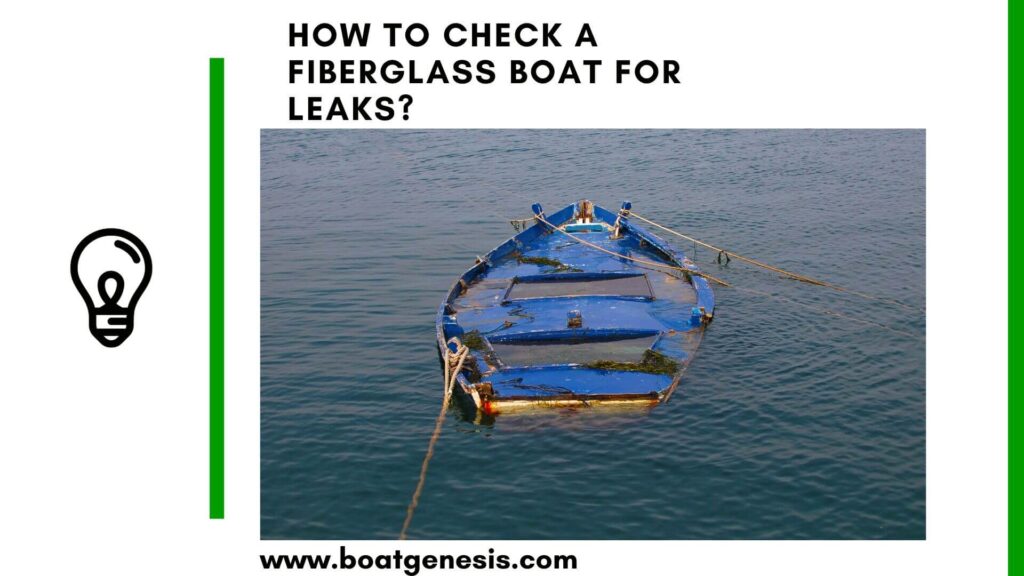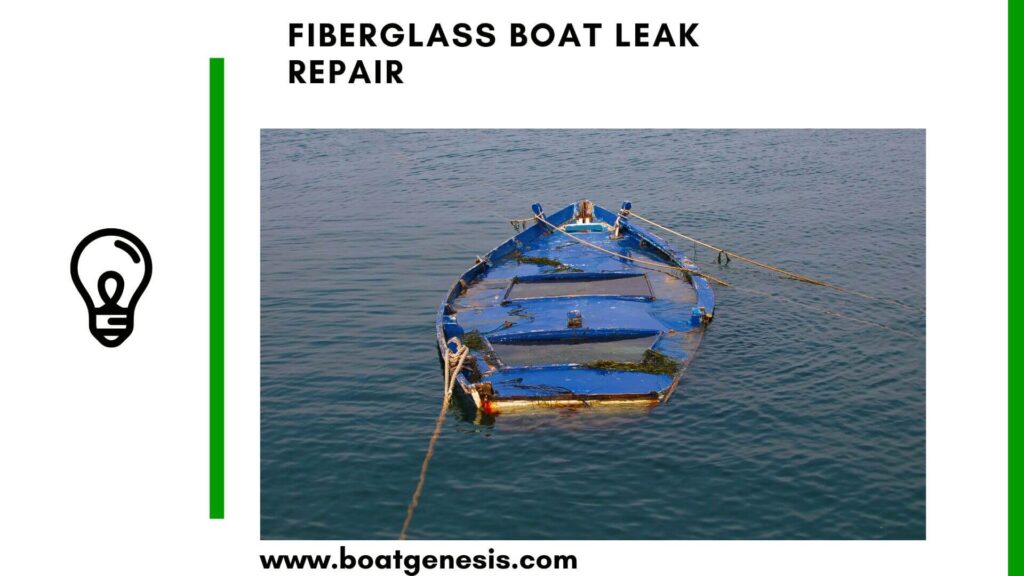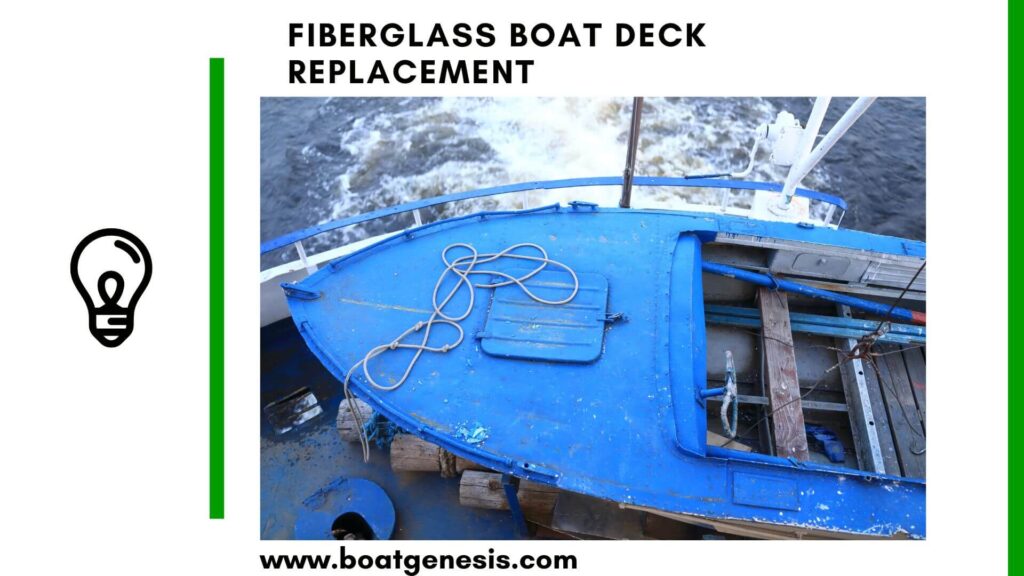If you own a fiberglass boat, you know the transom is its backbone—a critical structural component that supports the engine and absorbs the pounding of waves.
But what happens when your boat’s transom starts to rot, crack, or delaminate? Don’t panic! Fiberglass boat transom repair is absolutely doable, even for dedicated DIYers.
In this guide, you’ll learn everything you need to know about diagnosing, planning, and executing a transom repair that will outlast your boat. We’ll also dive into advanced tips, so you walk away confident, informed, and ready to get your boat back on the water.
Key Takeaways
- Fiberglass boat transom repair is essential for safety, longevity, and performance.
- Early detection of transom issues saves time and money.
- The repair process involves assessment, removal, core replacement, fiberglassing, and finishing.
- Using modern materials like composite cores can make your repair last longer than the original.
- Many guides miss crucial steps like moisture testing and ventilation—don’t skip these!
- Key Takeaways
- Why the Transom Matters
- Spotting the Signs: Is Your Transom in Trouble?
- Step-by-Step Fiberglass Boat Transom Repair
- Common Mistakes to Avoid
- Beyond the Basics
- Choosing the Right Materials for Your Fiberglass Boat Transom Repair
- How Long Does a Fiberglass Boat Transom Repair Take?
- Cost Breakdown: What to Expect
- Safety Tips for DIYers
- What Sets This Guide Apart
- Fiberglass Boat Transom Repair: Your FAQs Answered
- Final Thoughts
Why the Transom Matters
Let’s get real: the transom isn’t just another part of your boat. It’s the foundation for your engine, steering, and, frankly, your peace of mind.
When the transom is compromised, so is your safety. Water intrusion, flexing, and rot can turn a fun day on the water into a nightmare.
That’s why understanding fiberglass boat transom repair is a must for every boat owner.
Spotting the Signs: Is Your Transom in Trouble?

Before you break out the power tools, you need to know what you’re dealing with. Here are the most common symptoms of transom trouble:
- Soft spots: Press around the outboard mounting area. If it feels spongy, you’ve got rot.
- Cracks: Look for stress cracks radiating from the engine bolts or corners.
- Water leaks: Brown water seeping from bolt holes is a classic warning sign.
- Flexing: Excessive movement when you push or pull on the outboard.
Bonus tip: Use a moisture meter to check the transom’s core. High readings mean water has infiltrated the wood or core material. Early detection is key to avoiding a full-blown disaster (source).
Step-by-Step Fiberglass Boat Transom Repair
1. Assessment and Planning
Start by removing everything mounted to the transom—engine, trim tabs, swim platforms, and hardware.
Take detailed photos and label wiring to make reassembly easier.
Plan your repair: Will you replace the core from the inside or outside? Inside repairs preserve the boat’s lines but can be more complex.
Outside repairs are easier but require more cosmetic work.
Pro tip: Many guides skip this, but ventilation is critical. Moisture trapped in the transom can ruin even the best repair. Set up fans or a dehumidifier in your workspace.
2. Cutting Away the Damaged Skin

Use a circular saw or oscillating multi-tool to cut away the fiberglass skin.
Set your depth to avoid cutting through the outer skin if you’re working from the inside.
Remove the damaged fiberglass and set it aside for templating later.
Info: Most people don’t know this, but saving your cut-out skin pieces helps you recreate the original shape for a seamless finish.
3. Removing the Rotten Core
Chisel, scrape, or grind out all the rotten wood or foam core. Don’t leave any soft or darkened material behind. The surface should be clean, dry, and solid.
Use acetone to wipe down the area and kill any remaining mold.
Advanced tip: Drill small pilot holes in solid areas to check for hidden moisture or rot that isn’t visible on the surface.
4. Prepping for the New Core

Sand the inner surfaces to create a rough, clean bonding surface. Vacuum thoroughly. Test-fit your new core material—marine plywood, Coosa board, or another composite.
Dry-fit everything before mixing epoxy.
Modern upgrade: Composite cores like Coosa or Nidacore are lighter, stronger, and immune to rot. They’re more expensive but can outlast wood by decades.
5. Bonding the Core
Mix marine-grade epoxy with a thickening agent (like colloidal silica) to create a peanut-butter consistency.
Trowel a generous layer onto the hull’s inner skin. Bed the new core in place, then clamp or weight it down to ensure a tight bond.
Info: Many skip this, but vacuum bagging creates a superior bond and eliminates air pockets. If you have access to a vacuum pump, use it!
6. Laminating the Transom

Once the core is bonded and cured, it’s time to rebuild the inner fiberglass skin. Use layers of 1708 biaxial fiberglass cloth and epoxy resin.
Overlap the fiberglass onto the hull for maximum strength. Roll out air bubbles for a flawless finish.
Pro tip: Tab the fiberglass at least 6 inches onto the hull sides and bottom for structural integrity (source).
7. Finishing Touches
Fair the surface with epoxy filler, sand smooth, and prime. Reinstall hardware using new, sealed holes.
Use 3M 5200 or similar marine sealant to prevent future leaks. Paint or gelcoat for a professional look.
Common Mistakes to Avoid
- Rushing the dry-out phase: Moisture is your enemy. Let the area dry completely before installing the new core.
- Using polyester resin on wood: Stick with epoxy for superior strength and water resistance.
- Skipping ventilation: Trapped fumes and moisture can compromise your repair and your health.
- Not sealing hardware holes: Every bolt hole is a potential leak—seal them all!
Beyond the Basics
1. The Importance of Core Material Selection
Most websites default to marine plywood, but today’s composites are game-changers. Coosa board, for example, is waterproof, lightweight, and doesn’t rot. While the upfront cost is higher, you’ll save in the long run with a transom that’s virtually maintenance-free.
2. Moisture Testing
A simple tap test or screwdriver isn’t enough. Invest in a moisture meter to check the entire transom and adjacent stringers. This prevents hidden rot from spreading to your fresh repair.
3. Custom Templates
Trace your old core and skin pieces onto cardboard or plywood to create templates. This ensures a perfect fit and reduces the risk of gaps or voids.
4. Upgrading During the Repair
Consider reinforcing your transom with additional layers of fiberglass or switching to stainless hardware. Now is also the time to run new wiring, add backing plates, or install new accessories.
5. Documentation
Take photos at every stage. Not only will this help you remember how everything goes back together, but it’s also invaluable if you ever decide to sell your boat.
Prospective buyers love to see a well-documented repair—proof that the job was done right.
Choosing the Right Materials for Your Fiberglass Boat Transom Repair
Selecting the right materials is more than just picking up whatever’s on sale at the marine store. Here’s a quick rundown of the best options for each step:
Core Materials
- Marine Plywood: Classic and affordable, but susceptible to rot if not perfectly sealed.
- Coosa Board: Lightweight, strong, and completely rot-proof. Costs more but lasts a lifetime.
- Nidacore or Divinycell: Foam cores that offer excellent strength-to-weight ratios and are easy to work with.
Resins
- Epoxy Resin: Superior bonding and waterproofing. It’s the gold standard for structural repairs.
- Polyester Resin: Cheaper, but not as strong or water-resistant. Use only for cosmetic repairs.
Fiberglass Cloth
- 1708 Biaxial Cloth: Offers incredible strength and is easy to wet out.
- Mat: Use as a filler or for non-structural areas.
Sealants
- 3M 5200: Industry favorite for sealing hardware and joints. Flexible and long-lasting.
- Butyl Tape: Great for bedding bolts and through-hull fittings.
How Long Does a Fiberglass Boat Transom Repair Take?
This depends on the extent of the damage and your experience level. For most DIYers, expect:
- Assessment and prep: 1-2 days
- Core removal and dry-out: 2-7 days (depending on moisture)
- Core installation: 1 day
- Fiberglassing: 1-2 days (including cure time)
- Finishing and reassembly: 1-2 days
Plan for at least a week of work, and don’t rush the drying or curing phases—patience pays off with a transom that will last.
Cost Breakdown: What to Expect
- Materials: $300–$1,200 (depending on core type and size of repair)
- Tools: $100–$400 (if you don’t already own grinders, saws, sanders, etc.)
- Professional labor: $2,000–$5,000+ (if you hire out the job)
DIY repairs save thousands, but only if you take your time and do it right.
Safety Tips for DIYers
- Wear a respirator: Fiberglass dust and resin fumes are hazardous.
- Use gloves: Epoxy and resins can irritate skin.
- Ventilate: Always work in a well-ventilated area.
- Eye protection: Flying debris and resin splashes are no joke.
What Sets This Guide Apart
Many guides gloss over the nitty-gritty details that make or break a transom repair. Here, you’ve learned about:
- The importance of ventilation and moisture testing
- Why composite cores are worth the investment
- How to use templates for a perfect fit
- The value of detailed documentation
- Upgrades you can make during the repair for a truly future-proof transom
Most importantly, you now understand that a successful fiberglass boat transom repair isn’t just about slapping some glass on wood—it’s about methodical prep, smart material choices, and attention to detail.
==>> Also read: Is it worth replacing a transom on a boat?
Fiberglass Boat Transom Repair: Your FAQs Answered
The transom is the flat stern board perpendicularly mounted to the back end of the boat. It provides structural support, houses engine mounting hardware, and may have a door to access storage space or mounting bolts.
With proper maintenance and support while trailering, a fiberglass boat transom should last approximately 15-20 years depending on usage and conditions. Following the maximum recommended engine weight limits extends transom life.
Definitely – fiberglass transoms are designed to be repaired. Even significant damage like large cracks, chunks missing or complete delamination can be fixed with the proper materials and techniques for grinding, sealing wood, laminating fiberglass, and applying cosmetic gelcoat.
Soft spots, cracking, water in bilge after runs, loose motor mounting hardware, visible gaps around edges, crazing, spongy feel when pressed on, or failing “tap tests” (hollow sounds when tapped) indicate transom work is needed.
It’s possible for very minor repairs, but for anything structural, the engine must come off. This ensures safety and access.
Most factory transoms consist of 3-5 alternating layers of fiberglass cloth and woven roving. DIY repairs should aim for 4-6 layers to account for variation in hand work compared to molded transoms.
Ideally, transom repairs should be done on both the inside and outside surfaces to fully seal moisture entry points and restore exterior finish appearances.
Replacing a rotted transom averages $800-1,500 for materials and labor. The costs climb higher for larger boats or those requiring custom work. DIY repairs cost 30-50% less.
Yes, it is possible to reinforce and beef up an existing transom to support a larger outboard motor. This requires adding substantial amounts of overlapping fiberglass and ensuring full bonding to the existing inner laminate.
After everything is reassembled, check for:
No flexing or movement when the engine is mounted
No water intrusion after a rain or washdown
Solid sound when tapping around the transom
Final Thoughts
Fiberglass boat transom repair may seem daunting, but with the right approach, it’s totally achievable. Take your time, use quality materials, and don’t cut corners.
The reward? A transom that’s stronger than ever, peace of mind on the water, and the satisfaction of knowing you did it yourself.
And if you want to dive into detailed discussions from experienced boaters, this forum thread is packed with real-world advice.
So roll up your sleeves, gather your tools, and give your boat the solid transom it deserves.
Let us know in the comments below if you have any other transom questions as you start your project!

Founder of BoatGenesis, Warren has hands-on experience in fiberglass boat repairs, marine equipment testing, and powerboat building. Learn more about Warren.




